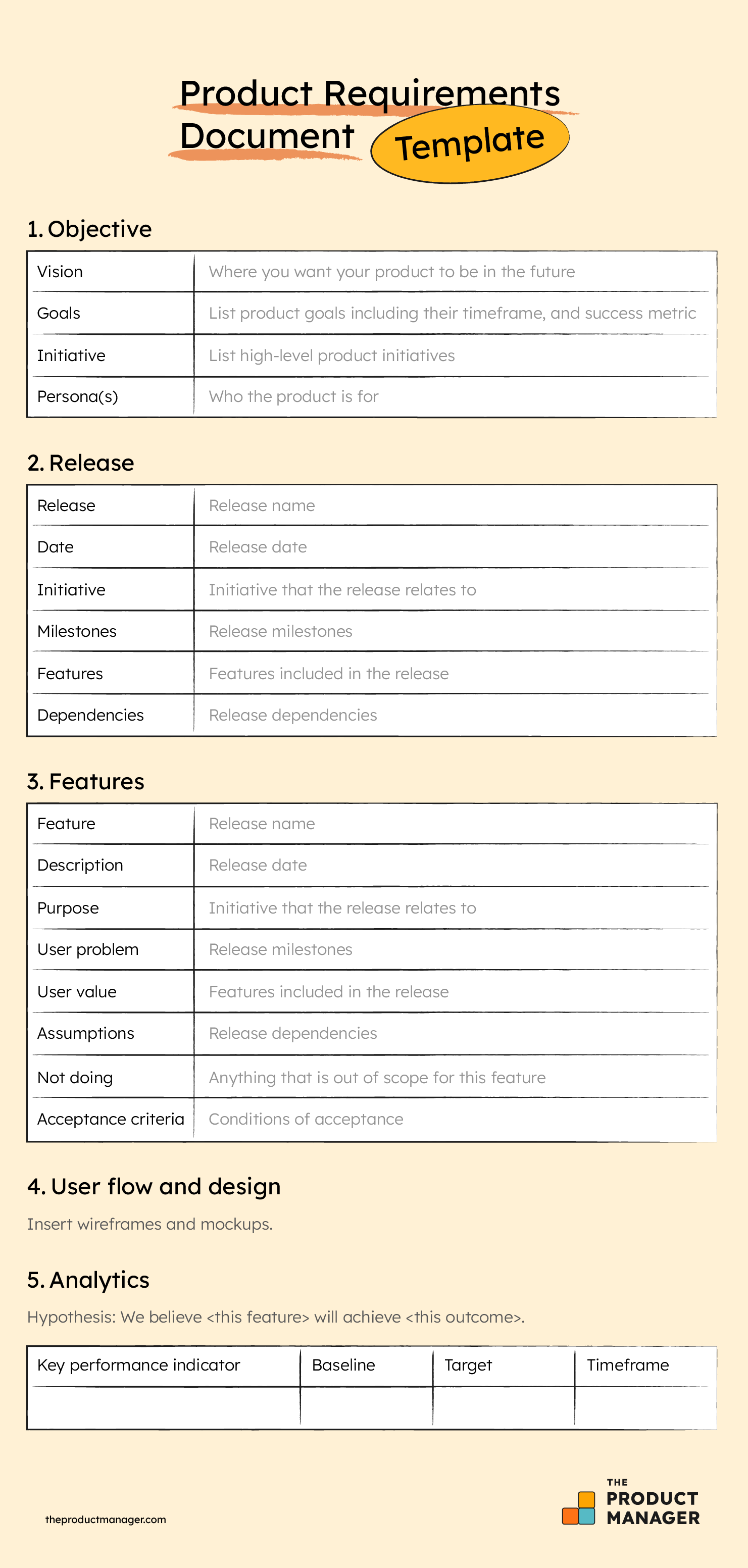Product design requirements serve as the foundation for successful product development. They ensure that the product meets user needs, market demands, and business goals. Creating a comprehensive product design requirements template can streamline the process of capturing and organizing these requirements, leading to enhanced product quality and efficiency.
By defining the necessary attributes, features, and constraints of the product, a product design requirements template provides a clear roadmap for designers and engineers. This helps to avoid misunderstandings, reduce rework, and accelerate product development. As a result, businesses can stay competitive by delivering products that meet customer expectations and drive market success.

Elements of a Comprehensive Product Design Requirements Template
To create a comprehensive product design requirements template, consider including the following elements:
Functional Requirements: Describe the primary actions or tasks that the product must perform. These requirements should be specific, measurable, achievable, relevant, and time-bound (SMART).
Non-Functional Requirements: Define the desired qualities of the product, such as performance, security, reliability, usability, and maintainability. These requirements ensure that the product meets specific technical and operational standards.
Constraints: Outline any limitations or restrictions that must be considered during design, such as budget, regulatory compliance, or manufacturing capabilities. These constraints guide the design process and ensure that the final product meets the necessary specifications.
User Stories: Capture the needs and perspectives of end-users by writing user stories. These stories describe the user’s goals, motivations, and expected interactions with the product.
Acceptance Criteria: Define the specific conditions that must be met for the product to be considered successful. These criteria provide clear benchmarks for testing and evaluating the final product against the initial requirements.
Benefits of Using a Product Design Requirements Template
The benefits of using a product design requirements template are numerous. It:
Provides Clarity and Structure: By organizing requirements in a structured template, it becomes easier to understand, communicate, and track them.
Facilitates Collaboration: A shared template allows multiple stakeholders, such as designers, engineers, and product managers, to collaborate seamlessly and ensure that all requirements are addressed.
Reduces Risk: A comprehensive product design requirements template helps mitigate risks by identifying potential issues early in the development process.
Enhances Traceability: Linking requirements to specific design elements and test cases allows for traceability, enabling easier change management and documentation.
Drives Decision-Making: A clear understanding of product design requirements facilitates informed decision-making and prioritization of project tasks.
Conclusion
A well-crafted product design requirements template is an invaluable tool for streamlining product development processes. By capturing and organizing requirements in a standardized format, businesses can enhance product quality, reduce development time, and increase customer satisfaction. By embracing the benefits of a product design requirements template, product teams can deliver innovative solutions that meet the needs of the market and drive business success.
Whether you are designing a new product or enhancing an existing one, using a product design requirements template will empower your team to create products that exceed customer expectations and achieve long-term value.
